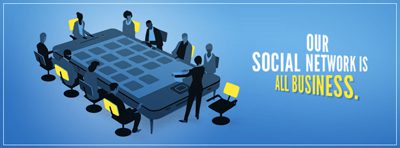

Think manners are old fashioned? You’re plain wrong, according to Walsh College.
As a critical determinant for admission to graduate business school at Walsh College, two classes immerse aspiring students in key gateway experiences to assess their readiness for graduate school. And one of those classes, COM 510, Communication Success Strategies, culminates in a Dining Etiquette seminar.
“There is a perception that dining etiquette is dated or old-school formality. Some people see it as something that only Emily Post wrote about,” said Jenny Tatsak, professor of Business Communications for Walsh College. “Really, it’s about networking and relationship building.”
COM 510 is taught by Tatsak and Dr. Linda Hagan, chair of the Business Communications Department. Throughout the course, students are immersed in subtle lessons on executive presence, an intangible characteristic that Walsh tries to cultivate in its students so they can excel in their careers. Presence, says Hagan, is that charisma, that confident and decisive ease, which distinguishes one professional from another. It comes from learning to communicate clearly in every setting, whether through the written word, through body language or in the specific words they speak.
Tatsak calls the class “celebrating with a purpose,” because it is the last night of the course and it involves a full meal that goes through every aspect of manners and food etiquette at the same time.
“It can be intimidating,” Tatsak acknowledges. “But the purpose is to graduate leaders. These are people who are advancing in their career and becoming executives.”
 So why learn about manners? Here are some reasons from Prof. Tatsak.
So why learn about manners? Here are some reasons from Prof. Tatsak.
1. Manners should be automatic. “A lot of students come into this asking, ‘Why?’ We believe (a class like this) takes the guesswork out of it and enhances their credibility. It all contributes to presenting yourself in a polite, polished way,” Tatsak said. “The average age of one of our students is 34. They’ve been in the workplace. They have experience. They need to show that.”
2. The workplace is multicultural, so you need to understand how your behavior is perceived by people of many nations. That means manners are more important than ever, Tatsak said. “You have to be able to dine and respect other people’s cultures,” she notes.
3. Manners can be tricky, so having universal rules are helpful. Tatsak is left handed, so her inclination is to put her name tag on her left side. But when most people shake hands, they naturally extend their right hand, she said, and look toward the right for the name tag. So following that etiquette avoids confusion and keeps everyone on the same page for simplicity’s sake.
4. Respect the need for manners. It’s a true form of communication, Tatsak notes. It sells people on your respectability and understanding of polite society. It’s offering your audience an insight into your education and experience as well. So if you’re only gobbling up your meal and not stopping to talk to the people around you, then you’re not communicating well and not using your manners at the same time.
5. Knowing which bread plate is yours breaks down any awkward moments at a big meeting. Taking the guesswork out of manners is an important part of feeling comfortable with people, especially those you’re hoping to make a client or work for as an employee. By the way, the bread dish to your left is yours, Tatsak said. Your drink (for example, your glass of water) is always the one on your right.
One final manners tip: Pass to the left, receive from the right. Who knew, right?



